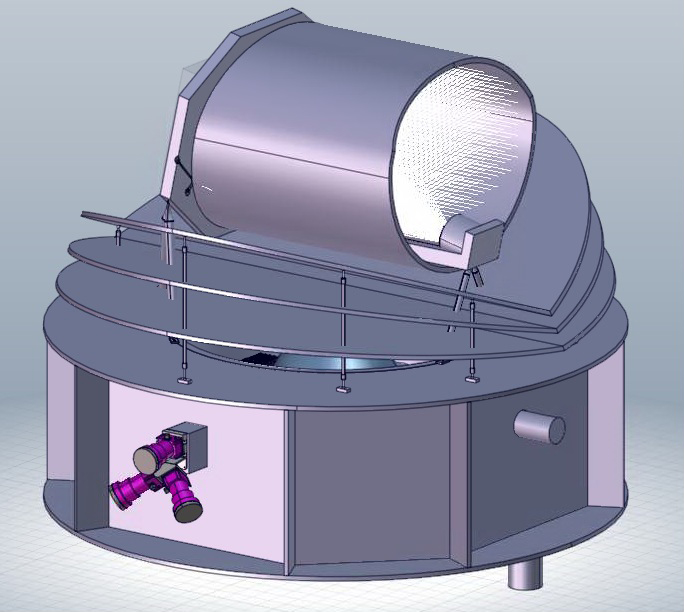Ariel Mission to Reveal Brave New Worlds Among Exoplanets

An ambitious European mission is being planned to answer fundamental questions about how planetary systems form and evolve. ARIEL (Atmospheric Remote-Sensing Infrared Exoplanet Large-survey) will investigate the atmospheres of several hundred planets orbiting distant stars. It is one of three candidate missions selected last month by the European Space Agency (ESA) for its next medium-class science mission, due for launch in 2026. The ARIEL mission concept has been developed by a consortium of more than 50 institutes from 12 countries, including UK, France, Italy, Germany, the Netherlands, Poland, Spain, Belgium, Austria, Denmark, Ireland and Portugal. The mission will be presented today at the Pathways 2015 conference in Bern, Switzerland, by ARIEL’s Principal Investigator, Prof. Giovanna Tinetti of UCL.
“The essential nature of exoplanets is still something of a mystery to us: despite finding nearly 2,000 exoplanets we haven’t yet found any discernible pattern linking the presence, size or orbital parameters of a planet to what its parent star is like,” said Tinetti. “If we are going to answer questions, such as how is the chemistry of a planet linked to the environment in which it forms, or is its birth and evolution driven by its host star, we need to study a statistically large sample of exoplanets. This is what ARIEL is designed to do.”
During its 3.5-year mission, ARIEL will observe over 500 exoplanets ranging from Jupiter- and Neptune-size down to super-Earths in a wide variety of environments. While some of the planets known by the time of ARIEL’s launch may be habitable, the main focus of the mission will be on exotic, hot planets in orbits very close to their star.
Hot exoplanets represent a natural laboratory in which to study the chemistry and formation of exoplanets. In cooler planets, different gases separate out through condensation and sinking to form distinct cloud layers. The scorching heat experienced by hot exoplanets overrides these processes and keeps all molecular species circulating throughout the atmosphere.
ARIEL will have a meter-class mirror to collect infrared light from distant star systems and to focus it to a spectrometer. This will spread the light into a ‘rainbow’ and extract the chemical fingerprints of gases in the planets’ atmospheres, as the planet passes in front or behind the star.
ARIEL will be placed in orbit at Lagrange Point 2 (L2), a gravitational balance point beyond the Earth’s orbit, where the spacecraft is shielded from the Sun and has a clear view of the whole night sky. This will maximize its options for observing exoplanets discovered previously by other missions.
Paul Eccleston, ARIEL’s Project Manager, said “STFC RAL Space is excited to be involved in such an ambitious mission, and one which is crucial to the study of how planets form and evolve. Working with such a large consortium means that we will be able to draw on world leading expertise from around Europe to get the very best results for of the mission.”
Media Contacts:
Ms. Anita Heward
Press Officer, ARIEL
+44 (0)7756 034 243
ucaparh@live.ucl.ac.uk
Mrs. Sarah Smart
Head of Communications, STFC RAL Space
+44 (0)7837 634 683
sarah.smart@stfc.ac.uk
Science Contact:
Prof. Giovanna Tinetti
University College London
+44 (0)7912 509 617
g.tinetti@ucl.ac.uk
Technical Contact:
Paul Eccleston
STFC RAL Space
+44 (0)7500 571 666
paul.eccleston@stfc.ac.uk
ARIEL Facts and Figures
* Elliptical primary mirror: 1.1 x 0.7 meters
* Mission lifetime: 3.5 years
* Payload mass: ~300 kg
* Dry mass: ~950 kg
* Launch mass: ~1,200 kg
* Destination: L2
* Cost: <450 million Euros
* Launch vehicle: Ariane 6-2
More information on ARIEL, including a full list of participating institutions:
http://ariel-spacemission.eu
Images
http://ariel-spacemission.eu/media/634
Concept view of the ARIEL spacecraft. Credit: ESA
http://ariel-spacemission.eu/media/635
Concept view of the ARIEL spacecraft in Soyuz rocket fairing, ready for launch. Credit: ESA
The UK ARIEL team is supported by the UK Space Agency.
University College London (UCL, http://www.ucl.ac.uk) was founded in 1826. We were the first English university established after Oxford and Cambridge, the first to open up university education to those previously excluded from it, and the first to provide systematic teaching of law, architecture and medicine. We are among the world’s top universities, as reflected by performance in a range of international rankings and tables. UCL currently has over 35,000 students from 150 countries and over 11,000 staff. Our annual income is more than £1 billion.
STFC RAL Space (http://www.ralspace.stfc.ac.uk/ralspace), based at STFC’s Rutherford Appleton Laboratory, carries out an exciting range of world-class space research and technology development. It has had significant involvement in over 200 space missions and is at the forefront of UK Space Research.
The Science and Technology Facilities Council (STFC, http://www.stfc.ac.uk) is keeping the UK at the forefront of international science and tackling some of the most significant challenges facing society such as meeting our future energy needs, monitoring and understanding climate change, and global security. The Council has a broad science portfolio and works with the academic and industrial communities to share its expertise in materials science, space and ground-based astronomy technologies, laser science, microelectronics, wafer scale manufacturing, particle and nuclear physics, alternative energy production, radio communications and radar. STFC operates or hosts world class experimental facilities including in the UK the ISIS pulsed neutron source, the Central Laser Facility, and LOFAR, and is also the majority shareholder in Diamond Light Source Ltd. It enables UK researchers to access leading international science facilities by funding membership of international bodies including European Laboratory for Particle Physics (CERN), the Institut Laue Langevin (ILL), European Synchrotron Radiation Facility (ESRF) and the European Southern Observatory (ESO). STFC is one of seven publicly-funded research councils. It is an independent, non-departmental public body of the Department for Business, Innovation and Skills (BIS).









